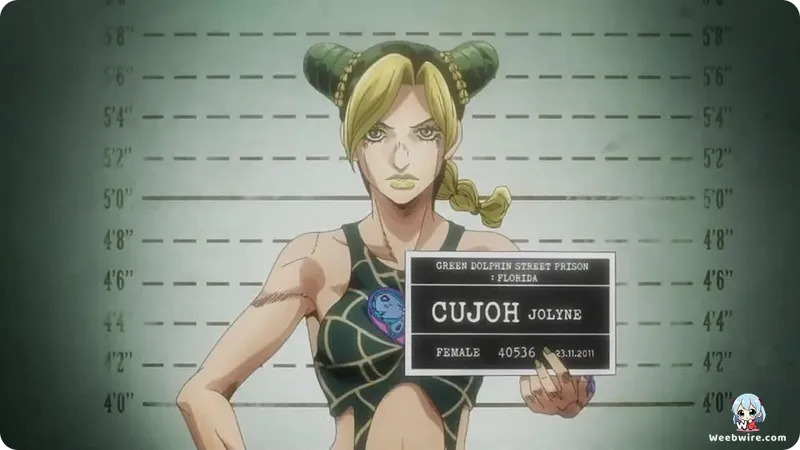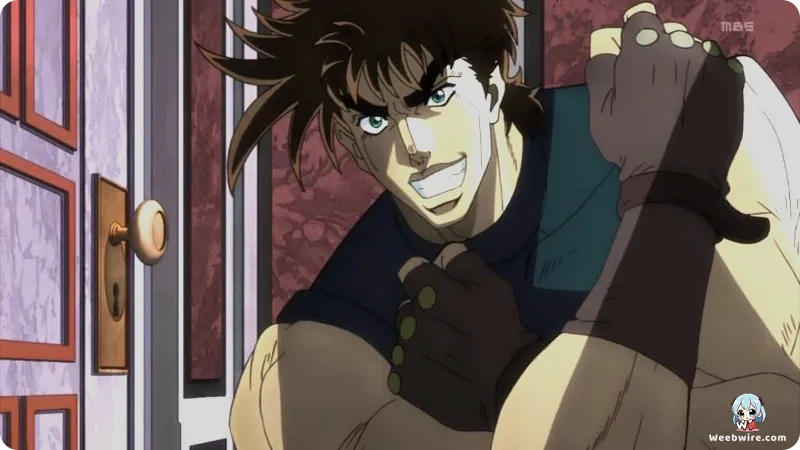JoJo's Bizarre Adventure: Unpacking the Creative Genius and Enduring Legacy of an Anime Icon

JoJo's Bizarre Adventure stands as an undisputed titan in the anime and manga landscape, renowned not only for its explosive action and intricate narratives but for its audacious creativity and sheer originality. While its immense global popularity might suggest widespread familiarity with every facet of Hirohiko Araki's magnum opus, a deeper exploration reveals a treasure trove of captivating facts, surprising inspirations, and delightful eccentricities that continue to enthrall its dedicated fanbase. From its signature character poses to its pervasive musical Easter eggs, "JoJo" is a universe brimming with essential trivia that profoundly enriches the viewing experience.
The Iconic JoJo Poses
One of the series' most instantly recognizable hallmarks is its distinct visual language, particularly the iconic "JoJo Poses." These dramatic, often contorted, and always flamboyant stances transcend mere aesthetic flourishes; they are fundamental to the series' identity. Araki, a meticulous observer of art and fashion, drew inspiration from diverse sources, including classical sculptures, high fashion magazine covers, and even ballet. These poses dynamically underscore character personalities, emotional states, and the inherent theatricality embedded in every confrontation. Fans worldwide have enthusiastically embraced this phenomenon, recreating real-life "JoJo Poses" in public, a powerful testament to the series' profound cultural resonance. This masterful blend of high art and action unequivocally sets "JoJo" apart, transforming virtually every frame into a potential masterpiece of dynamic composition.

A Symphony of Musical References
Beyond the visual spectacle, the auditory journey within "JoJo" is equally unparalleled. A delightful, often overlooked detail for newcomers is the series' pervasive integration of musical references. Hirohiko Araki's profound passion for music is intricately woven into the very fabric of his creation. Stand names, character aliases, and even minor antagonists frequently serve as direct allusions to legendary rock bands, albums, and songs spanning from the 1970s onwards. From "Killer Queen" and "Crazy Diamond" (Queen and Pink Floyd, respectively) to "Sticky Fingers" (Rolling Stones) and "Gold Experience" (Prince), the series functions as a veritable jukebox of classic rock. This ingenious nomenclature adds layers of profound depth and often ironic humor, subtly foreshadowing a Stand's unique ability or a character's defining personality. It transforms the act of identifying these references into an engaging, ongoing quest for discerning fans, enriching the narrative with a unique meta-textual layer.
The Evolution of Power: Hamon to Stands
The evolution of "JoJo's" power system represents another fascinating narrative pivot. The series initially featured Hamon (Ripple), a breathing technique used to generate sunlight-like energy. However, Araki perceived its limitations as a hindrance to narrative possibilities. This led to the revolutionary introduction of Stands in Part 3, Stardust Crusaders. Stands, as visual manifestations of a person's life energy, each possess a singular, unique ability. This paradigm shift revolutionized the series, enabling an incredibly diverse array of imaginative powers, moving beyond pure physical prowess to strategic battles of intellect and ability. This creative transformation was instrumental in maintaining the series' enduring freshness and ensuring its longevity, empowering Araki to explore an infinite spectrum of combat scenarios and character dynamics. The transition from Hamon to Stands marks a significant milestone in shonen manga history, exemplifying Araki's bold willingness to innovate and evolve his own groundbreaking creation.
David Production's Artistic Fidelity
David Production, the acclaimed animation studio behind the JoJo's Bizarre Adventure (TV) adaptation, merits immense commendation for their faithful and visually vibrant rendition of Araki's distinctive artistic style. A compelling aspect of their approach is their unwavering dedication to meticulously replicating the manga's iconic, often dramatic, color palette shifts. In the manga, Araki frequently employs unexpected color schemes to emphasize mood, heighten tension, or accentuate character emotions. David Production masterfully translates this abstract visual language to animation, resulting in scenes where character outfits or backgrounds spontaneously shift colors without logical explanation, purely for artistic impact. This profound commitment to artistic integrity, rather than strict realism, stands as a hallmark of their adaptation and a primary reason why the anime resonates so powerfully with fans of the original manga. Their work undeniably showcases a deep understanding and profound respect for the source material's unparalleled aesthetic.
The Enduring "To Be Continued" Arrow
Perhaps one of the most enduring and universally beloved quirks of the "JoJo" anime is the iconic "To Be Continued" arrow. This simple yet incredibly effective visual device, frequently accompanied by the unforgettable outro song "Roundabout" by the legendary band Yes, consistently appears at the conclusion of numerous episodes, particularly during gripping cliffhangers. It rapidly transcended into an instant internet meme, widely employed to signify an unresolved situation or a dramatic pause. Its consistent integration within the anime, directly referencing a similar narrative flourish in the manga, perfectly encapsulates the series' flair for the dramatic and its self-aware, theatrical presentation. It’s a seemingly small detail that has exerted a disproportionately large impact on fan culture, firmly establishing itself as a signature element of the "JoJo" viewing experience.
A Multi-Generational Saga
Beyond these specific elements, the overarching structural design of JoJo's Bizarre Adventure itself stands as a fascinating narrative innovation. Unlike most long-running shonen series that meticulously follow a single protagonist for decades, "JoJo" unfolds as a multi-generational saga, with each distinct part introducing a new protagonist from the illustrious Joestar bloodline. This unique narrative approach empowers Araki to constantly reinvent the wheel, exploring vastly different eras, geographical locations, and thematic concerns, from Victorian England to modern-day Italy, from the scorching deserts of Egypt to the tranquil towns of Japan. This unparalleled narrative fluidity ensures the series remains perpetually fresh, preventing stagnation and allowing for an incredibly diverse cast of characters and antagonists, each possessing their own distinct charm and compelling motivations. It is a profound testament to Araki's bold storytelling vision that he chose to deviate from the traditional single-hero formula, meticulously crafting a sprawling epic that feels both remarkably cohesive and constantly surprising.
In essence, JoJo's Bizarre Adventure (TV) represents a masterclass in innovative storytelling and groundbreaking visual artistry, brimming with hidden depths and playful eccentricities that cement its status as a truly unique entry in the global anime landscape. Its influence extends far beyond its direct viewership, profoundly shaping trends in character design, revolutionary power systems, and even pervasive meme culture. For those new to the series or seasoned fans seeking a deeper appreciation, these illuminating facts underscore precisely why "JoJo" continues to stand tall as a bizarre, brilliant, and endlessly entertaining adventure.
Credits
JoJo's Bizarre Adventure (TV)
Author
Hirohiko Araki
Cover Art
Hirohiko Araki
Studio
David Production
Publisher
Shueisha
Producers





